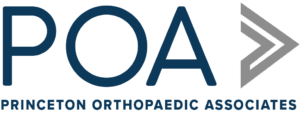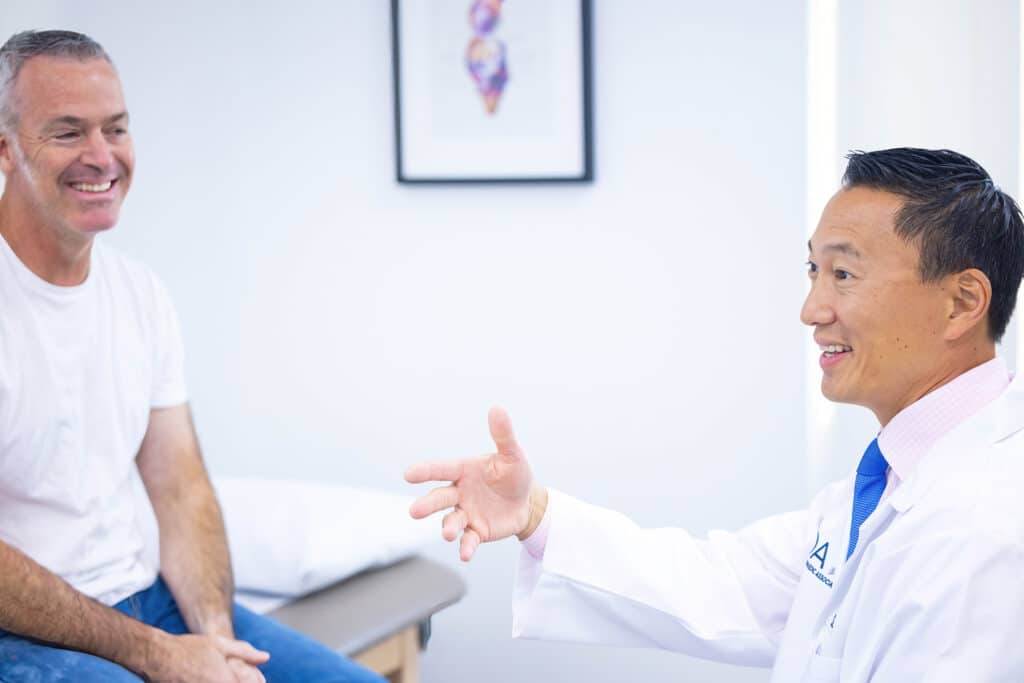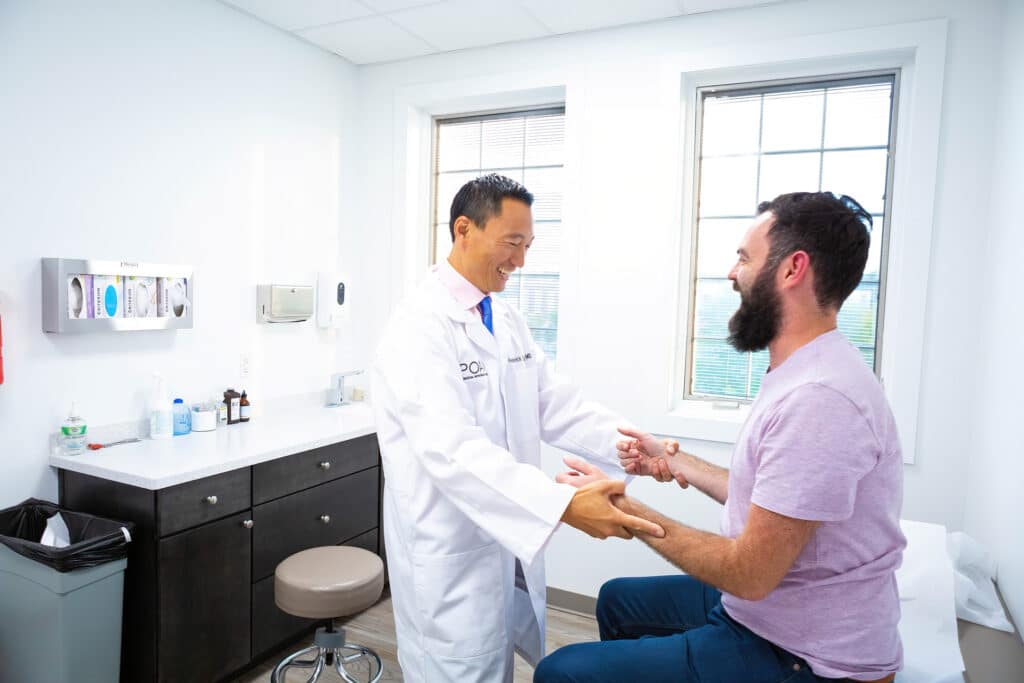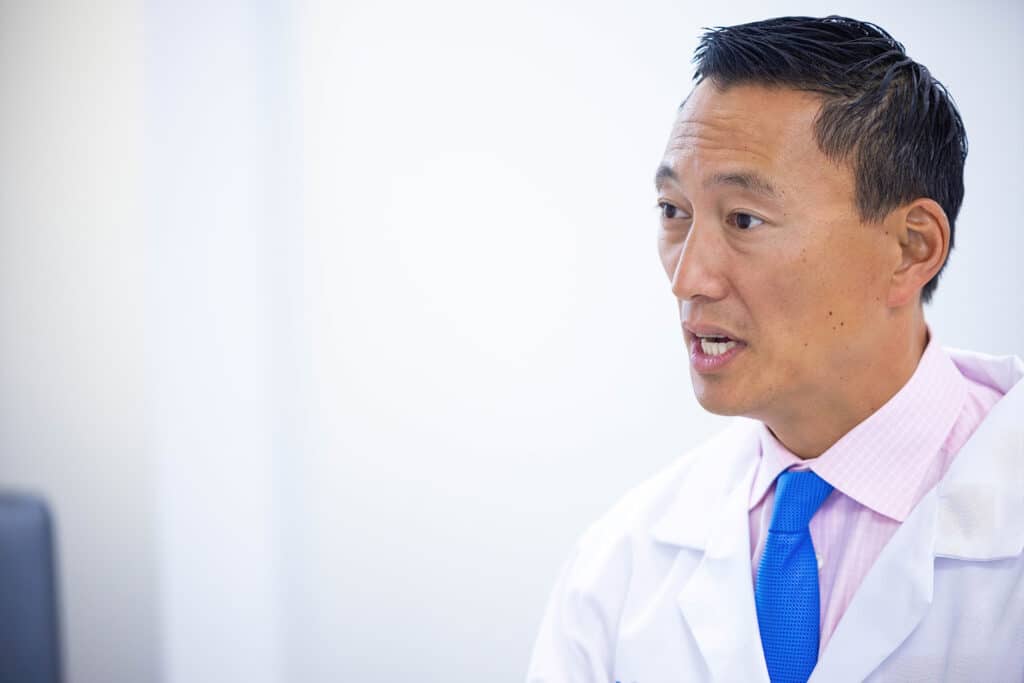
Physician Assistants
Physical & Occupational Therapists
KneeMRI ScansNon-OperativePhysiatry
Physical Therapy
Podiatry
Spine
Sports Medicine
TraumaUrgent Care
X-Ray Imaging

As the largest joint in the body, the knee is one of the most easily injured.
Millions of people visit their doctor every year because of common knee problems, including fractures, ligament and cartilage tears, overuse injuries, and osteoarthritis.
So how do you keep your knees strong and help protect them from injury?
Put simply, keep your muscles strong. (and keep your weight down)
Vulnerable to Injury
Your knees provide stable support for your body and allow your legs to bend and straighten. They are aided by the muscles in the front of your thigh (quadriceps) and the back of your thigh (hamstrings). Because they (are) made up of many components – bones, cartilage, ligaments, and tendons – your knees are vulnerable to various injuries.
Athletes of all ages – from the high school soccer star to the middle-aged weekend warrior – are susceptible to acute injuries like tears to the anterior cruciate ligament (ACL) and the meniscus (as well as traumatic cartilage injuries).
Additionally, athletes, particularly young athletes who (specialize) in only one sport year-round, are at high risk for overuse injuries, including:
Further, young athletes are also at greater risk for growth plate injuries. Growth plates are areas of developing cartilage at the ends of long bones where bone growth occurs in children. When the growth plate is injured, it can fracture and disrupt average bone growth.
(Several studies have demonstrated that if a young athlete who is skeletally immature (growth plates are still open) specializes in one sport year-round, they have a 15-20x increased chance of musculoskeletal injuries compared with the same athlete that participates in multiple sports during the same period.) Simply put, young athletes should be encouraged to participate in a variety of sports up until they are more skeletally mature (15-16 years old for boys and 13-14 years old for girls).
As you age, knee problems are generally associated with osteoarthritis, resulting from wear and tear on the joint. With osteoarthritis, the protective cartilage in the knee gradually wears away, resulting in bone rubbing on bone.
According to the Centers for Disease Control and Prevention, osteoarthritis affects more than 30 million adults in the United States.
In addition to age, risk factors for osteoarthritis include:
Symptoms of a knee problem depend on the type of injury or condition. However, most knee problems cause pain and may limit your availability to move your knee. (Knee swelling can also indicate a structural issue.)



Diagnosing and Treating
Doctors can often diagnose knee problems with a medical history and physical exam. We may recommend x-rays and other imaging tests to confirm the problem.
Treatment depends on the condition, but it involves physical therapy to strengthen the knee and the muscles surrounding it in most cases. We can usually treat tendon injuries with rest, ice, compression, and elevation. Our team may treat osteoarthritis with anti-inflammatory (medications) or cortisone (steroid) injections to reduce pain and swelling.
If knee injuries do not respond to conservative treatments, surgery may be necessary.
At the University Medical Center of Princeton (UMCP), board-certified orthopedic specialists, also experts in sports medicine, offer advanced, minimally invasive techniques to treat knee conditions.
We can often treat sports injuries (including ligament and meniscal damage) with arthroscopic surgery, a minimally invasive procedure that enables doctors to examine and repair (or reconstruct) tissues inside (the knee) through small incisions around the joint.
Newer forms of treatment for knee injuries, including injecting platelet-rich plasma or bone marrow (aspirate) concentrate into the affected joint, have not yet been proven to be any more effective than current treatment methods, though research is continuing. This field of orthobiologics will likely enhance treatment options for all joint disorders in the future.
Protecting Your Knees
You cannot avoid some knee problems, but you can prevent many conditions by doing the following:
It is important to note that exercise, including low-impact movement, can help relieve symptoms and slow the progression even if you have osteoarthritis.
If you suffer from knee pain or injury, talk to your doctor before the condition worsens. Often, physical therapy and medication will be enough to get you back on the field or back to your normal activities in no time.

© 2023 Princeton Orthopaedic Associates. The contents of princetonorthopaedic.com are licensed under a Creative Commons Attribution-NonCommercial 4.0 International License. Copying without permission is strictly forbidden.